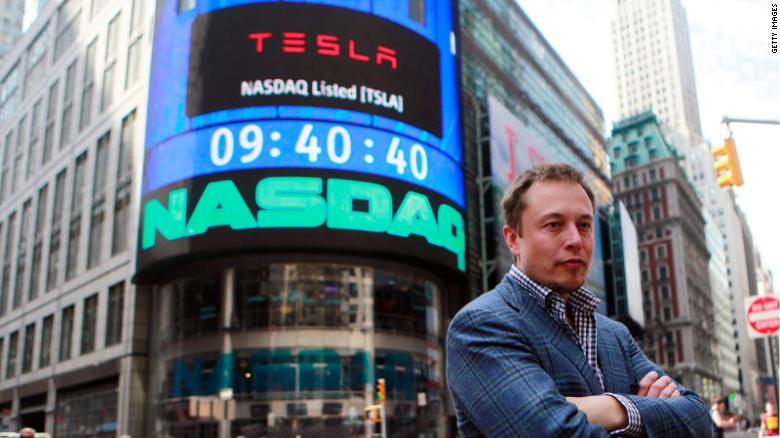The first electric motor
The first electric motor

Thomas Davenport of Vermont builds the first useful electric motor. Other inventors, including Michael Faraday, have previously built small devices that move using electricity, but Davenport’s are the first with the power to do actual work. He reportedly uses one of his new motors to power a small carriage.
First batteries
First batteries

French physicist Gaston Planté invents the lead-acid battery. Other scientists, including Planté himself, will improve on the invention in the decades to come.
The first viable electric car
The first viable electric car

Famed English inventor Thomas Parker -- called the “The Edison of Europe” -- creates the first commercially viable electric car. Unlike many of Parker’s other inventions, such as electric trams, underground lighting and a smokeless fuel called “Coalite,” the car attracts little interest.
The first gasoline car
The first gasoline car

Karl Benz builds the Benz Patent Motorwagen, generally credited as being the first internal combustion-powered automobile and the precursor of all gasoline-powered cars today. Electric cars have already been around for 50 years.
Electric taxi fleets
Electric taxi fleets

Fleets of electric taxi cabs are introduced in both Paris and New York.
Porsche’s first car is electric
Porsche’s first car is electric

Dr. Ferdinand Porsche builds his first car, the Egger-Lohner Model C.2 Phaeton, which is powered by electricity.
Too fast
Too fast

The first speeding ticket in America is given to the driver of one of New York’s electric cabs. He’s pulled over by a bike riding police officer while driving 12 miles an hour in an 8 mile per hour zone.
Crazy fast
Crazy fast

Belgian race driver Camille Jenatzy becomes the first person to drive over 100 kilometers an hour, or 62 miles per hour, in a specially built electric car called "La Jamais Contente,” or “The Never Satisfied.”
The rise of the electric car
The rise of the electric car
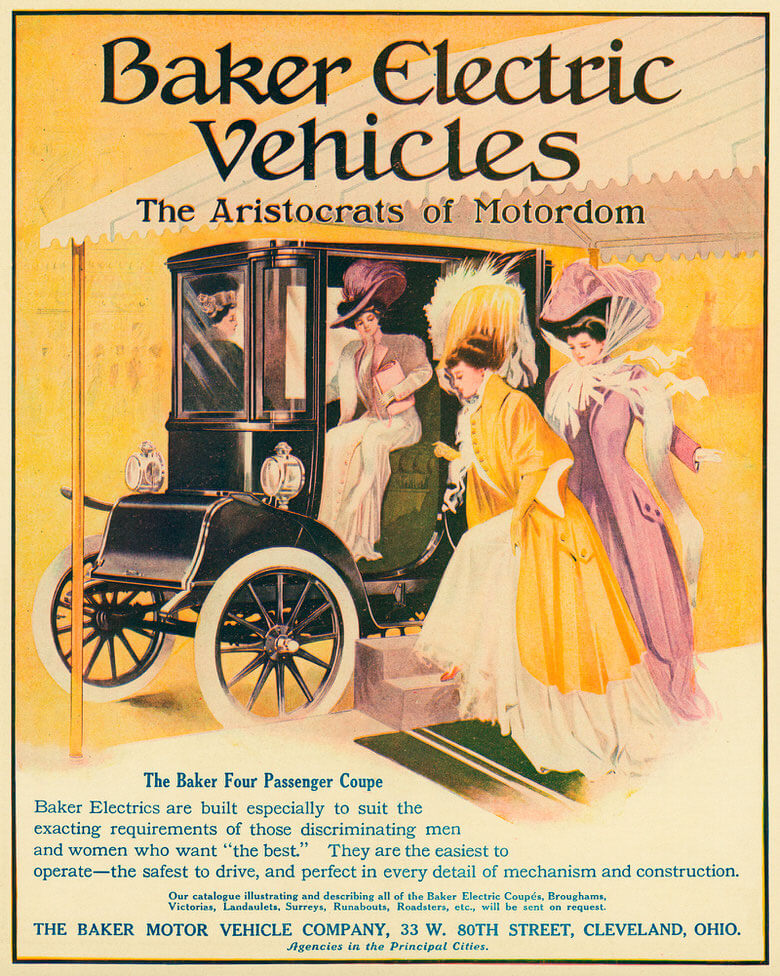
Electric cars rise to prominence as more viable alternatives to steam cars, which can take 45 minutes to start in the morning, and to gasoline cars, which have to be cranked to start and that required complicated gear shifting. As a result, electric cars are advertised as especially suitable for women given their lighter physical demands. By the turn of the century, more than a third of all cars on American roads are electric. The electric car’s prominence will be short-lived, however, as technological advancements soon give gasoline power an overwhelming lead.
Ford’s cheap gas car
Ford’s cheap gas car

Ford Motor Co. introduces the Model T. Thanks to repeated improvements in its production, this gasoline-powered car will become ever cheaper to buy and nearly ubiquitous on American roads. (Still, Henry Ford’s wife, Clara, drives an electric car which she prefers to her husband’s noisy creations.)
GM kills the crank
GM kills the crank

General Motors introduces the electric starter on the Cadillac Touring Edition, eliminating the need to crank the engine. This invention removes one of the most objectionable aspects of driving a gasoline-powered car. Over the following decades, electric cars virtually disappear from the roads as gasoline and diesel power take over. Electric cars will continue to be hampered by their limited driving range, long charging times and bulky batteries.
Ford goes nuclear
Ford goes nuclear

One answer to the electric cars’ shortcomings is an onboard nuclear reactor. Ford’s Nucleon concept car, really just a model, is envisioned as having a reactor core that can power the car for 5,000 miles. After that, spent fuel rods will be swapped out at a convenient service station. The Nucleon was designed based on the assumption that, someday, nuclear reactors could be made safe enough for use in cars, a popular idea at the time.
Small-scale electrics
Small-scale electrics

During the late 1950s and throughout the ‘60s, various startup automakers attempt to popularize electric cars, but none really gain traction. The Nu-Klea Starlite was offered for a few years by Kish Industries, a company based just outside Lansing, Michigan.
GM’s electric experiments
GM’s electric experiments

Major automakers haven’t totally given up on the potential of electric cars. General Motors experiments with the Electrovair, a Chevrolet Corvair converted to run on batteries. Years later, GM also creates the Electrovette, an electric Chevrolet Chevette.
AMC’s experiments
AMC’s experiments

American Motors Corporation, which was later absorbed by Chrysler, unveils the Amitron, a prototype electric car. The company says it plans to offer the Amitron for sale in just a few years. That never happens.
Tiny startups, tiny cars
Tiny startups, tiny cars

The Sebring-Vanguard company of Sebring, Florida, introduces the CitiCar, which becomes one of the most popular electric cars in many years. More than 4,400 are ultimately sold. Top speed for the CitiCar is 38 miles an hour. For better or worse, cars like this will shape the public’s image of electric cars as essentially road-going golf carts for a long time.
New cells
New cells

The cobalt-oxide cathode, the heart of the lithium-ion battery, is invented by John Goodenough and his colleagues at Oxford University. In the decades to come, batteries made possible by this invention will power all sorts of consumer electronics, as well as electric cars that can travel hundreds of miles on a charge. In 2019, Goodenough and two other researchers were given the Nobel Prize for their work in helping to develop and improve lithium-ion batteries.
The Zero Emissions challenge
The Zero Emissions challenge

California passes the Zero Emission Vehicles Mandate, which requires automakers operating in California to sell a certain percentage of Zero Emission Vehicles each year. As a practical matter, that mostly means electric cars. Automakers work to comply while some also sue to stop, or at least weaken, the requirement. A dozen other states later adopt the ZEV Mandate. Eventually, it is changed to allow automakers to buy ZEV credits as an alternative to selling the actual cars.
GM’s big response
GM’s big response
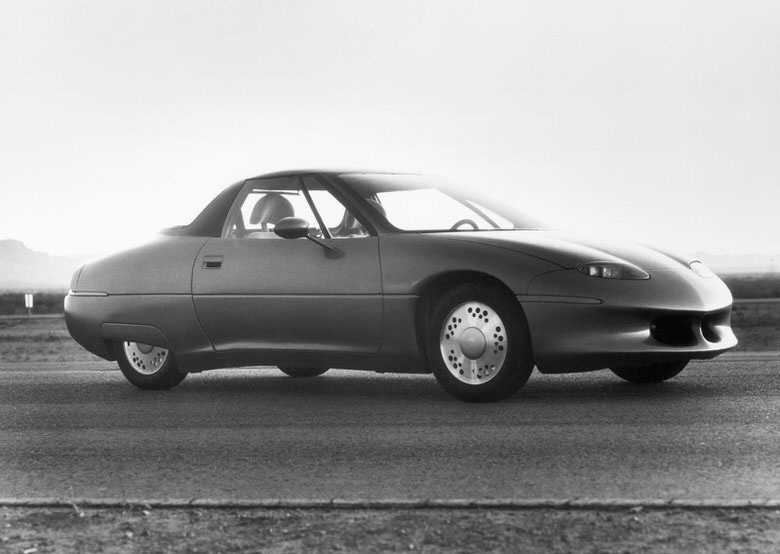
General Motors unveils the Impact concept car at the Los Angeles Auto Show. In a few years, this concept will be developed into the EV1.
GM charges in
GM charges in

General Motors puts the EV1 into production. The cars are available for lease, but not for sale.
More EVs come onto the scene
More EVs come onto the scene
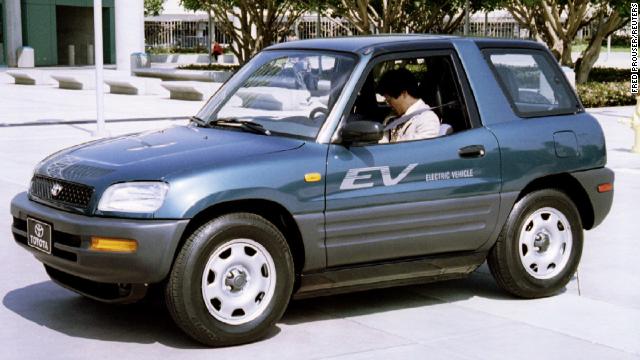
Largely to comply with California’s requirements, various automakers release electric cars that are often heavily modified versions of gasoline cars. New electric models include the Toyota Rav4 EV, the Honda EV Plus, the Chevrolet S-10 EV and Ford Ranger EV pickups.
GM takes a giant step back
GM takes a giant step back

GM cancels the EV1 program, takes back the cars and crushes most of them over the protests of former owners. The move becomes the subject of the documentary film “Who Killed the Electric Car?,” which paints GM as the villain. GM insists the cars could not continue being driven because it would have become impossible to maintain them in safe condition.
The startup that changes everything
The startup that changes everything

Tesla Motors, founded in 2003, shows off prototypes of the Tesla Roadster, the company’s first car. It’s a two-seat sports car based on the Lotus Elise. Priced at over $80,000, it’s a luxury product, but it performs like a sports car and can go more than 200 miles on a charge. It uses lithium-ion batteries, which will become the standard technology for electric cars.
Mitsubishi’s egg
Mitsubishi’s egg

Mitsubishi starts production of the i-MiEV (Mitsubishi Innovative Electric Vehicle), which will also be sold under the Peugeot and Citroen brands in Europe. The small egg-shaped city car is one of the first mass market EVs from a major automaker.
Tesla’s sedan
Tesla’s sedan

Tesla unveils the Model S sedan with seating for up to seven people. It will go on to become the fastest-selling electric car in history by far, despite its luxury car prices. Consumer Reports will laud it as the best car the magazine has ever tested although dependability issues will lead the magazine to pull its recommendation in 2019.
Nissan enters the market
Nissan enters the market

Nissan starts production of the Leaf, a practical, compact electric car with a relatively long driving range for its time. Sales would not live up to Nissan’s early predictions but, as of 2018, more Leafs had been sold than any other electric car model.
The Volt takes things farther
The Volt takes things farther
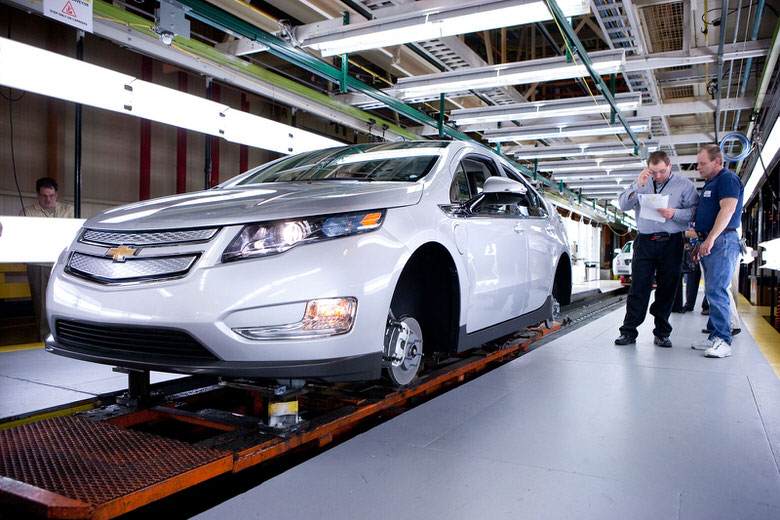
Production begins for the Chevrolet Volt. This is GM’s “range-extended electric car,” but most people will call it a plug-in hybrid. GM engineers see it as an electric car that does away with “range anxiety,” a term first used to describe the fear that a GM EV1 would run out of battery power before reaching a charger. The Volt wins the North American Car of the Year, European Car of the Year and Motor Trend Car of the Year awards, among others.
New rules of the road
New rules of the road

The US Environmental Protection Agency, the National Highway Traffic Safety Administration, the California Air Resources Board and major automakers announce jointly negotiated increases in fuel economy and emissions requirements. As planned, these will require cars and SUVs to become, on average, much more fuel efficient by the year 2025. Meeting these requirements essentially requires the sale of more electric and hybrid vehicles. This move, combined with tighter emissions requirements in Europe and electric car purchase incentives in China, drives manufacturers to develop more electric and other plug-in hybrid cars.
VW gets busted
VW gets busted

The US Environmental Protection Agency announces it has caught Volkswagen using software in many of its diesel vehicles to cheat on emissions tests, resulting in fines, penalties and the arrest of executives in both the United States and Europe. Partly as a result of this, Volkswagen Group declares that it will invest heavily in electric vehicles.
A cheaper Tesla
A cheaper Tesla

Tesla unveils its Model 3, which will become the brand’s most affordable and best selling car. In fact, in 2018, it will be the best selling luxury car of any kind.
GM is back
GM is back

General Motors begins production of the Chevrolet Bolt EV, the company’s first fully electric car since the EV1. It’s built at GM’s Orion Assembly plant in Michigan. It is also the basis of GM’s first attempts at producing fully autonomous cars.
VW plugs in
VW plugs in

Volkswagen Group starts Electrify America, a subsidiary company that will build a network of fast electric vehicle chargers across the United States. Volkswagen, along with Ford, BMW, and Daimler, is also part of Ionity, a joint venture that is building a similar fast charging network across Europe.
Sales are just beginning to ramp up
Sales are just beginning to ramp up

Global electric vehicle sales continue to increase rapidly. But all plug-in vehicles, including electric and plug-in hybrids, still only make up just over 2% of all passenger vehicle sales globally. More than half of all electric cars sold worldwide are in China, thanks to heavy government incentives.
